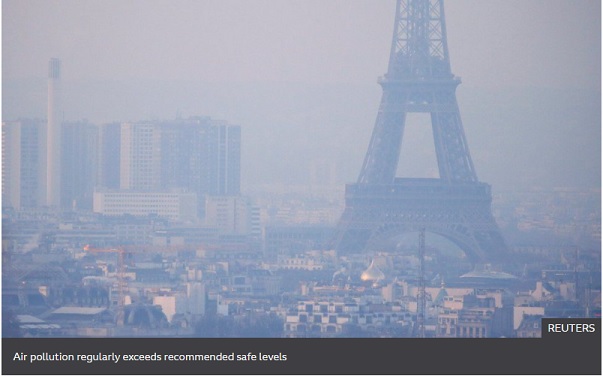
Air pollution is even more dangerous than previously thought, the World Health Organization (WHO) has warned, as it slashes maximum safe levels of key pollutants such nitrogen dioxide.
An estimated seven million people die prematurely each year from diseases linked to air pollution, the WHO says.
Low- and middle-income countries suffer the most, because of their reliance on fossil fuels for economic development.
The WHO puts air pollution on a par with smoking and unhealthy eating.
It is urging its 194 member states to cut emissions and take action on climate change, ahead of the COP26 summit in November.
Decade by decade, the limits for what's considered a safe amount of pollution are being ratcheted down.
It's not news to people suffering from heart and lung problems that toxic particles and gases can harm people at much lower levels than previously thought.
The changes to the guidelines mean the UK's legal limits for the most harmful pollutants are now four times higher than the maximum levels recommended by the WHO.
The trouble is that the worst pollution - tiny particles which can be breathed into the lungs - is so terribly hard to stop.
Pollution comes from vehicle exhausts and gas central heating. But harmful particles are also released into the air in other ways - or formed in the air in reaction with other chemicals.
Particle sources include paints, cleaning fluids, and solvents. Add to that car tyres wearing on the road, or brakes - meaning that even electric cars can't offer a perfect solution.
How many people know that farm slurry also gives off gases that contribute to deaths in cities?
That's why the new advice is so challenging to governments. If you live in a city, it's very hard to escape pollution, however hard you try.

